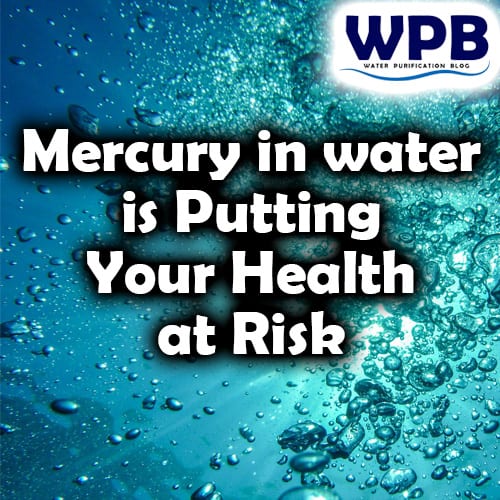Are You familiar with the quality of the water you drink? You might think your tap water is safe, but unfortunately, that’s not always the case.
One of the biggest health threats in the water supply is mercury contamination. But why is mercury in water so dangerous?
Table of Contents
What is Mercury?
Mercury is an occurring element that lies in the layers of the earth’s crust.
It can appear in liquid, gas, or solid form. Mercury is used for a variety of purposes. These include thermometers, dental fillings, and light bulbs.
How Does Mercury Get into Water?
Mercury can make its way into the water supply in a few different ways. One of the most common ways is through industrial activities.
Wastewater from factories might contain high levels of mercury.
Mercury can also get into the water through atmospheric deposition. When mercury is released into the air, it can eventually settle on the ground and make its way into the water.
Is there Mercury in Well Water?
Mercury can enter well water in several ways. One of the most common ways is through natural deposits in the earth’s crust.
Can Mercury Dissolve in Water?
Mercury and water do not form any chemical bonds when they come into contact with each other. As a result, mercury does not dissolve in water.
The Dangers of Mercury in Water
So, why is mercury in water so dangerous? Mercury is a potent neurological poison. It that can have serious health effects on both humans and wildlife.
When fish and other aquatic life are exposed to mercury, it can accumulate in their tissues over time. This means that larger, older fish are often the most contaminated.
When humans consume contaminated fish, they can experience a variety of health problems. These include damage to the nervous system, kidneys, and liver.
Mercury can also be harmful when inhaled. When mercury is released into the air, it can be breathed in and cause damage to the respiratory system.
How to Detect Mercury in Water?
There are several methods for detecting mercury in water. Here are some of the most common methods:
- Laboratory Analysis: The most accurate method for detecting mercury in water is to have a water sample analyzed by a certified laboratory.
- Portable Field Test Kits: There are portable test kits available that detect mercury in water. These kits use colorimetric or electrochemical methods to measure the concentration of mercury.
- While these kits are not as accurate as laboratory analysis, they can provide a quick test.
Prevention and Treatment
Preventing mercury contamination in water is a complex issue. It requires action at both the individual and government levels. Some steps individuals can take include properly disposing of products that contain mercury.
There are also water treatment methods that can be used to remove mercury from water.
One way of water treatment is activated carbon filtration.
Conclusion
In conclusion, mercury contamination in water is a serious issue. It can have a range of negative health effects on both humans and wildlife.
It is important to understand the dangers of mercury and take steps to prevent it from entering the water supply in the first place.

Who am I?
I am working as a water treatment technical manager and I have more than 25 years of practical experience in water purification.
Water purification expert
After many years of experience in water purification, I want to share some of my knowledge and get people to know the real importance of water quality.
Water purification and water treatment are very complex themes, so it is important to explain them in an easy-to-read way.
On this blog, you will find many understandable, easy-to-read information about water purification.
I hope you enjoy it, find some useful information, and thank You for reading.
More info on my work and my expertise on water purification can be found on my LinkedIn profile.






